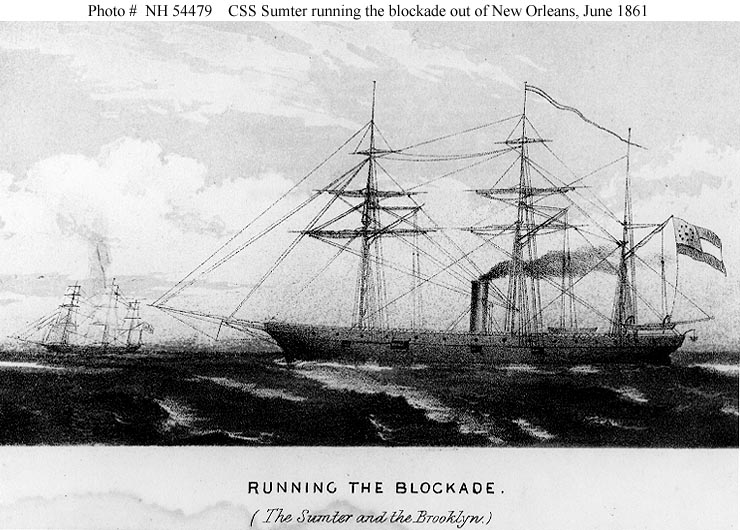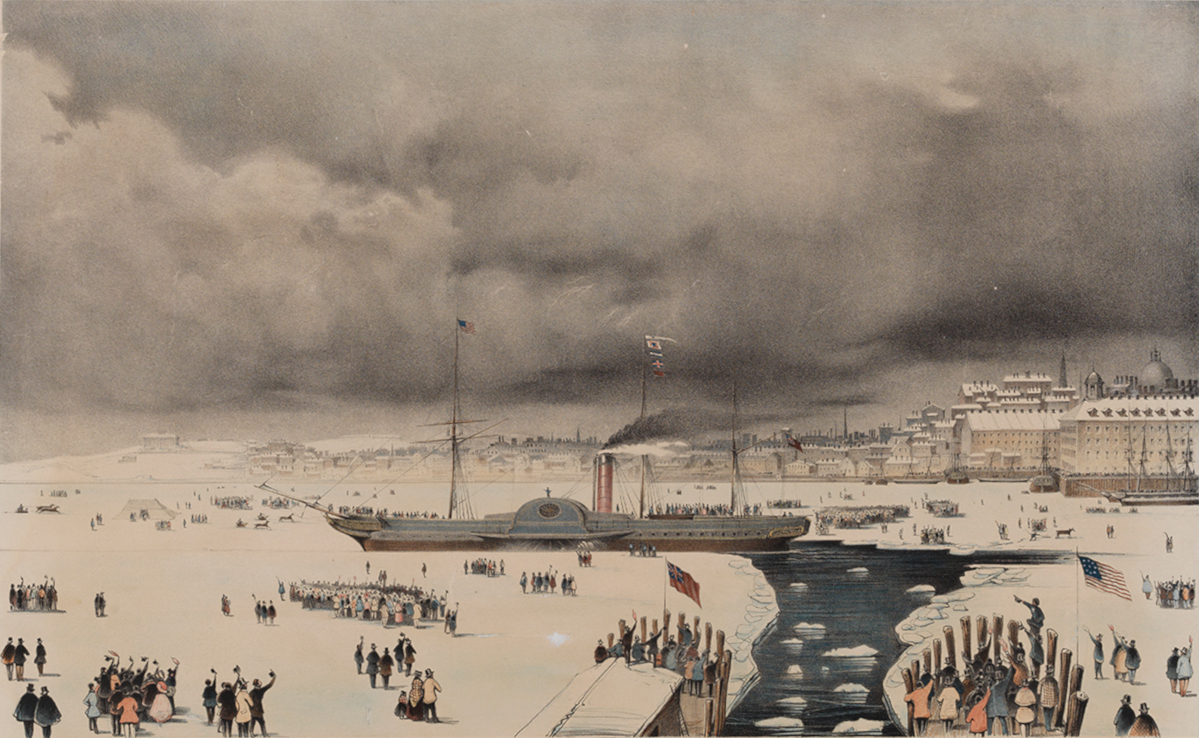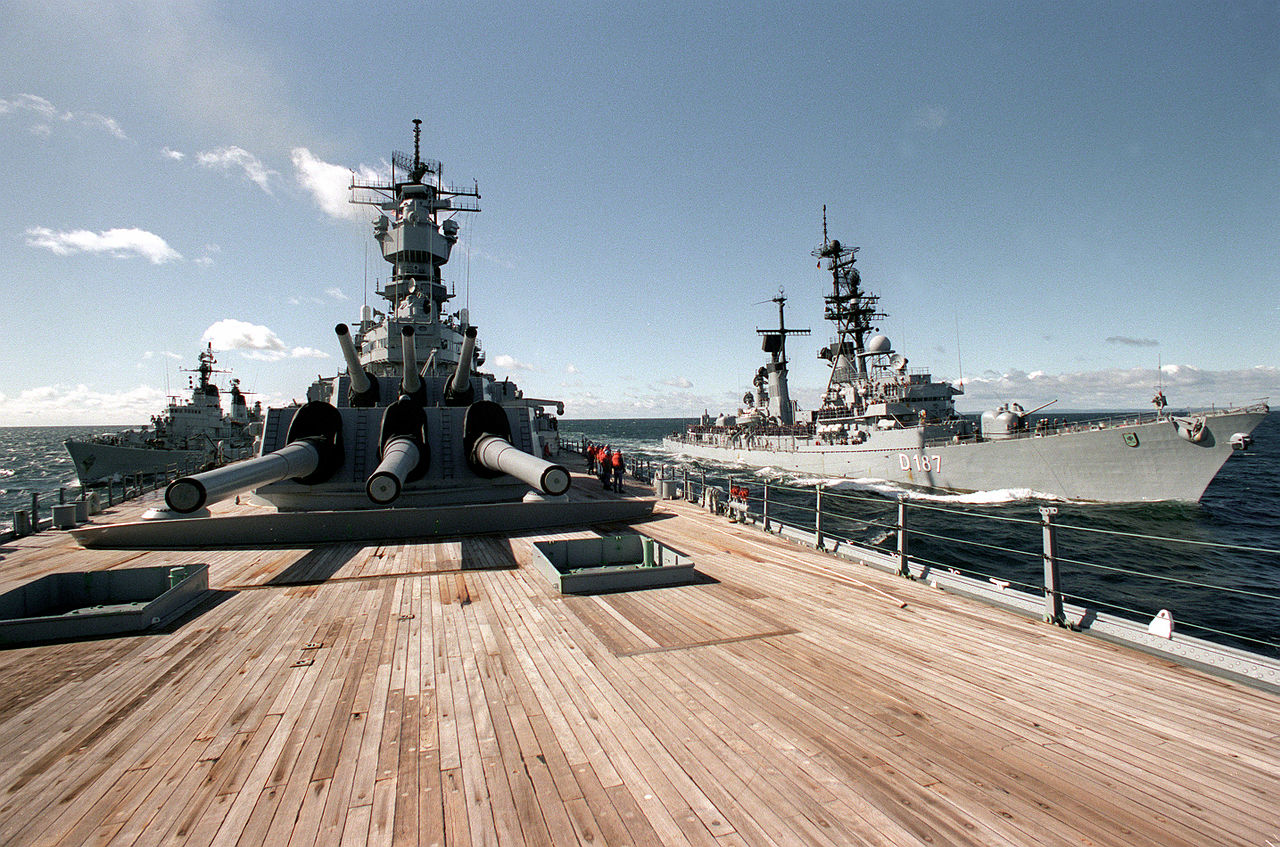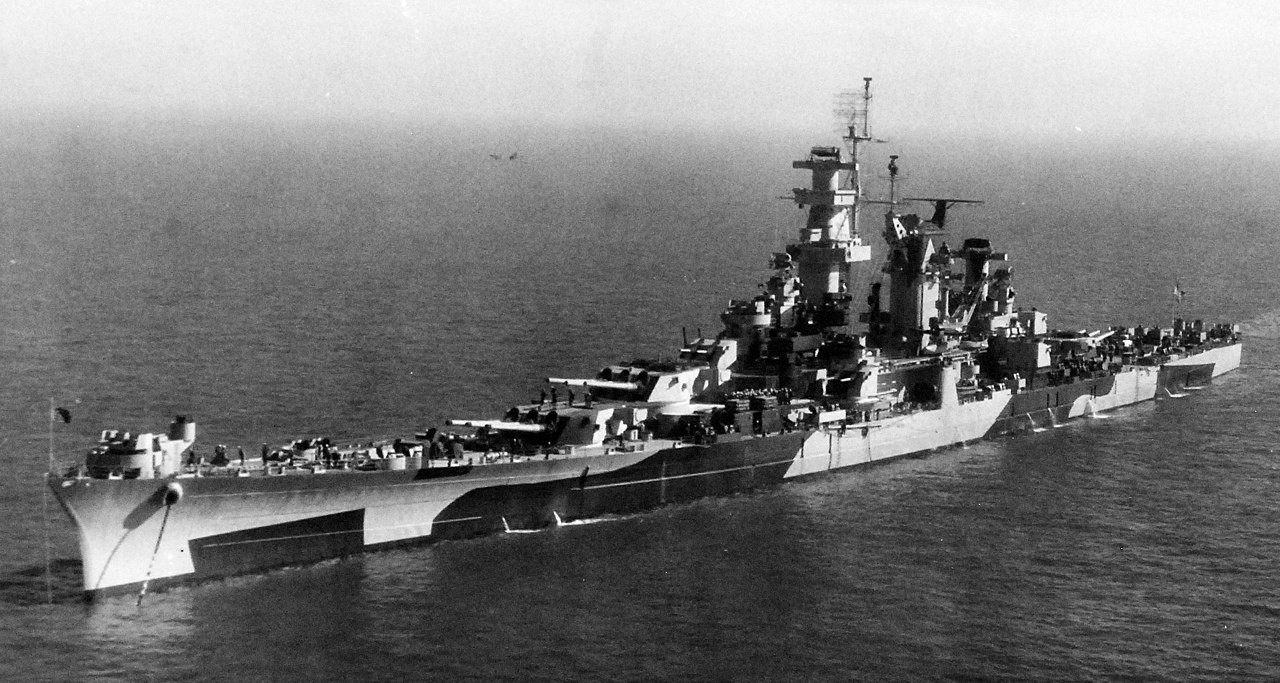Reader Suvorov has contributed another part in his series on Confederate commerce raiding.
While the Confederacy’s brief flirtation with privateers was quickly choked off by the Union blockade, the Confederacy’s long-term plans for dedicated naval commerce raiders continued to move forward. Their domestic program proceeded somewhat haltingly – their first commerce raider, the Sumter, was not ready for action until the summer of 1861, by which point the Union blockade was tightening around the Southern ports, including New Orleans, where the Sumter was being refitted – to the frustration of one Raphael Semmes, who had been placed in command of the vessel towards the end of April and had hoped to escape to sea before the blockade was in place.

CSS Sumter
Semmes was a major exponent of commerce raiding, and the war would give him a chance to put his theories in action. When the steam-powered sloop Brooklyn, assigned to the New Orleans blockade, left its post in pursuit of a quarry, Semmes escaped New Orleans to unleash his “defective little Sumter” on Union shipping. However “defective” the Sumter might have been, it captured eight vessels within a week on its initial cruise between New Orleans and the Cuban port of Cienfuegos—a victory that was significantly dampened when the Spanish authorities, concerned about their perceived neutrality in the conflict, returned most of his prizes to their original owners. (The fact that Semmes had grabbed three of his prizes almost in the mouth of Cienfuegos’ harbor probably did not dispose the Spanish authorities kindly towards Semmes’ attempt to leave his prizes in that port indefinitely.) Read more...






Recent Comments